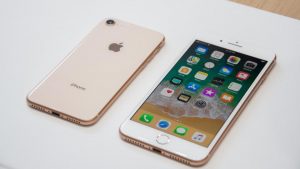Who doesn’t like premium flagship smartphone with a big screen to enjoy the multimedia content? Almost everyone will love to have a smartphone with a big screen, but not all. The Google Pixel 2 and Apple iPhone 8 are exactly for those, who like to have a handy smartphone with not so big or not so small display. Both of these devices offer a smaller display with an awesome in hand feel. These are the mini flagships from Apple and Google.
In terms of hardware capabilities, these devices have no more or no less than that of any flagship smartphones. So, let’s analyse these smartphones in a different perspective to find the right one that suits your taste.
Price: The Apple iPhone 8 will be available in 64 GB and 256 GB storage options, priced at ₹ 61,999 and ₹ 73,999 respectively. The Google Pixel 2 is priced at ₹ 61,000 and ₹ 70,000 for the 64 GB and 128 GB storage variants respectively. Both models don’t offer an external SD card slot or 3.5 mm headphone jack so, get a higher storage variant with a pair of Bluetooth headphones (if you use are who listen to music when your phone is charging). Unlike the Apple iPhone X and Google Pixel 2 XL, these devices are priced neck to neck making it a tough choice between the two.
Design: This year, Apple has completely replaced the overall materials used to construct the device. For the last 5 years, Apple used metal unibody design and suddenly the device went back to all glass unibody design with the toughest ion exchange tempered glass in the market which has other added advantages over the metal unibody design. On the other hand, the Google Pixel 2 offers an industry leading full metal unibody solution with a thick poly coating on the top to reduce fingerprint smudges, however, according to recent news, the paint tends to sculp off and also easily scratchable in normal day to day usage. So, our choice is the tempered ion exchange glass on the Apple iPhone X.![]()
Display: The most used and exploited feature on any smartphone is display, its where we touch and feel the things on the smartphone, it works as view finger for the camera, large canvas for the video player and a platform to enjoy the AR and VR using head gears and many more features. Coming to the display, the Google Pixel 2 offers a standard 5.0-inch FHD P-OLED display with standard 16:9 aspect ratio screen. The display is protected by Corning Gorilla Glass 5. The Apple iPhone 8 features a 4.7-inch retina HD display with Apple RGB colour gamut (with real-life look alike colour reproduction). The Apple iPhone 8 also offers 3D touch capabilities which have its own applications. So, with respect to numbers, Google Pixel 2 is the winner, however, in real life pixels doesn’t count and Apple has the best display technology for a long time.
Hardware: The Google Pixel 2 offers 4 GB RAM and Qualcomm Snapdragon 835 Octa-core SoC, which is the best hardware available in the market (non-Apple market), on the other hand, the Apple iPhone 8 offers 2 GB RAM (too much for iOS) paired with state of the art Apple A11 Bionic chipset, which even outperforms the desktop class CPU with its 6 core architecture. In terms of day to day usage both models should be able to offer a smoother experience without any stutter, however, when it comes to AR capability and machine learning, Apple takes the lead. So, choose either of these smartphones and you won’t be disappointed at any cost.
Camera: Both smartphones are equipped with a single 12 MP camera with OIS and a larger aperture for improved low lighting conditions. The 12 MP camera on the Google Pixel 2 is same as that of the Google Pixel 2 XL, which offers live bokeh effect using software and 4K video recording capability. The 12 MP camera on the iPhone 8 misses out on the bokeh effect but offers 4K video recording up to 60 frames per second, making it the best in terms of video recording capability. If you are a still photo buff then, go with the Pixel 2, if you are a video guy, then go with the Google Pixel 2. However, it doesn’t mean other things are bad on other two devices, but Apple has an edge over the video, so does the Google on still photos.
Software: Once again, the software is the main differentiators here. The iOS 11 on the Apple iPhone 8 and the Android Oreo 8.0 on the Pixel 2 are old school rivalries. If you like freedom with ability to change what the UI looks like and feels like then go with the Android, however, if you are ok with the iOS 11 UI (same as the iOS 10, 9, 8, 7, 6, 5, 4, 3, 2, 1) with secure and faster operating system on the long haul, then go with the Apple iPhone 8.
Extra features: Each of these phones have one identical feature that makes these devices cool. The Apple iPhone 8 offers Qi-based wireless charging whereas the Google Pixel 2 has the squeeze feature, which is the fastest way to open the Google assistance. Both models support fast charging and a battery that can last for a complete day of usage without any hassle.
Conclusion: Both models offer state of the art design, faster processors and premium cameras. So, both models are concentrated for those, who love compact smartphones with premium tech specifications. So, going with either of the devices will not disappoint you at least for 2 years.

